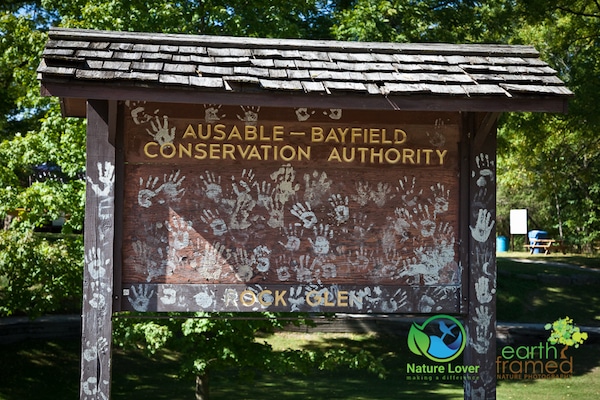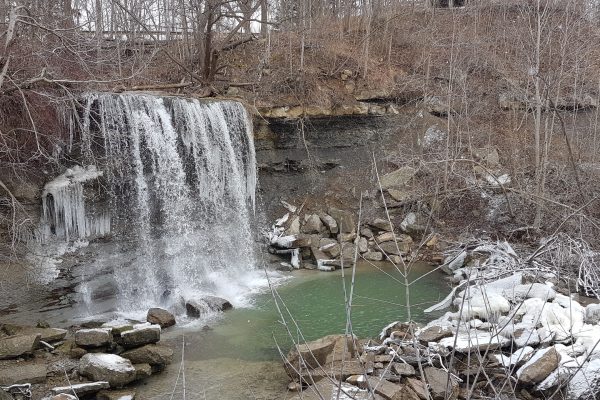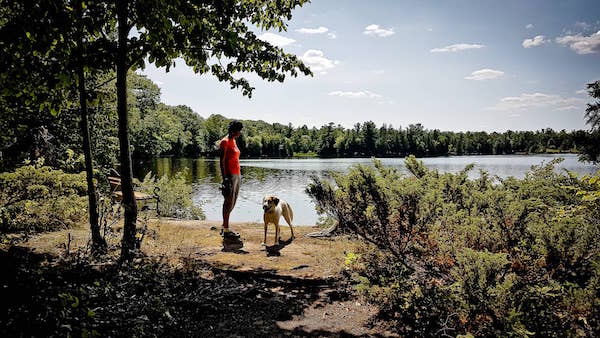I vaguely remember going to Rock Glen when I was younger: standing under the waterfall, searching for fossils, eating a delicious picnic lunch packed by my mother and playing in the woods. I can honestly say that Rock Glen isn’t what I remember but it was a lovely, forested park that a family or a group of friends could meet at and have a lovely day.
We joined our local nature club for a guided walk through the woods. We learned about trees, shrubs and wildflowers. Before the members arrived, we took Maya for a leisurely walk around the area. It was a beautiful, cool, fall day and the sun was shining. There was also a lot of shade, both along the trails and in the parking lot.
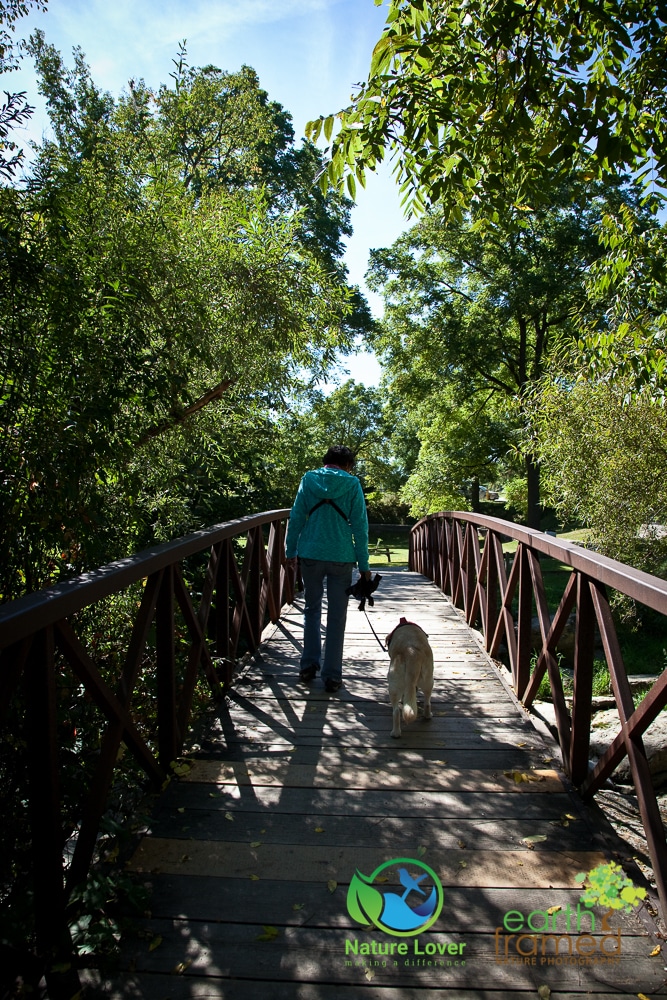
Maya’s walks were getting much shorter by this time and she was definitely more comfortable in the cooler, but still warm, weather. She was still very excited and happy to be outside and experiencing new places and smells.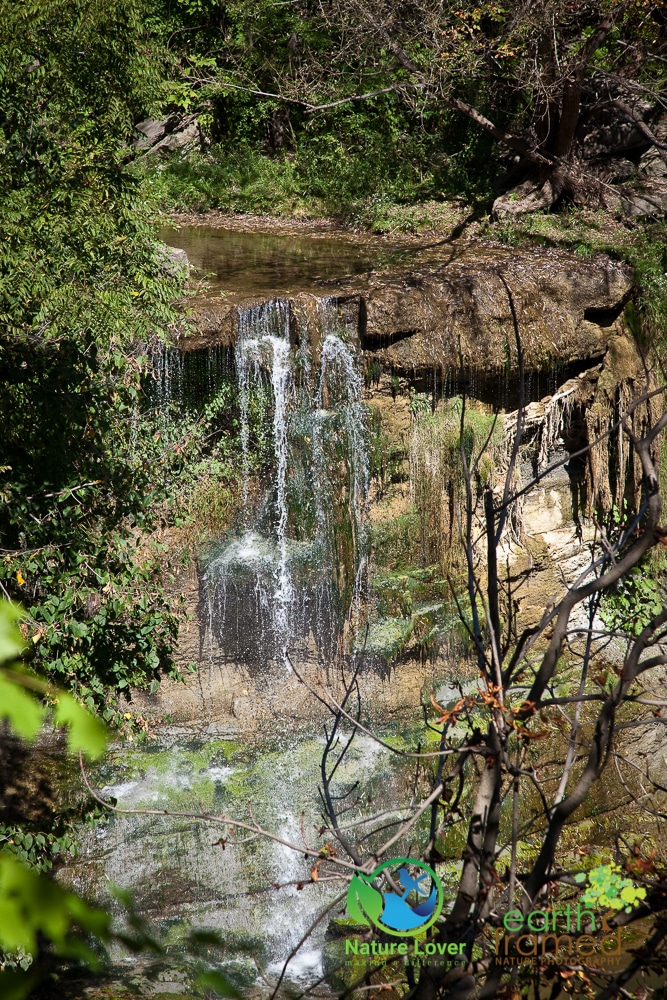
From the top of the trail we could see the waterfall gently breaking over the edge of the cliff. We’d have to come back in the spring to see the difference in flow and water level.
The trail came to a large flight of stairs that descended toward the river. We decided this was a good time to turn back since we didn’t want Maya to have to go down and then up such a large number of steep stairs. 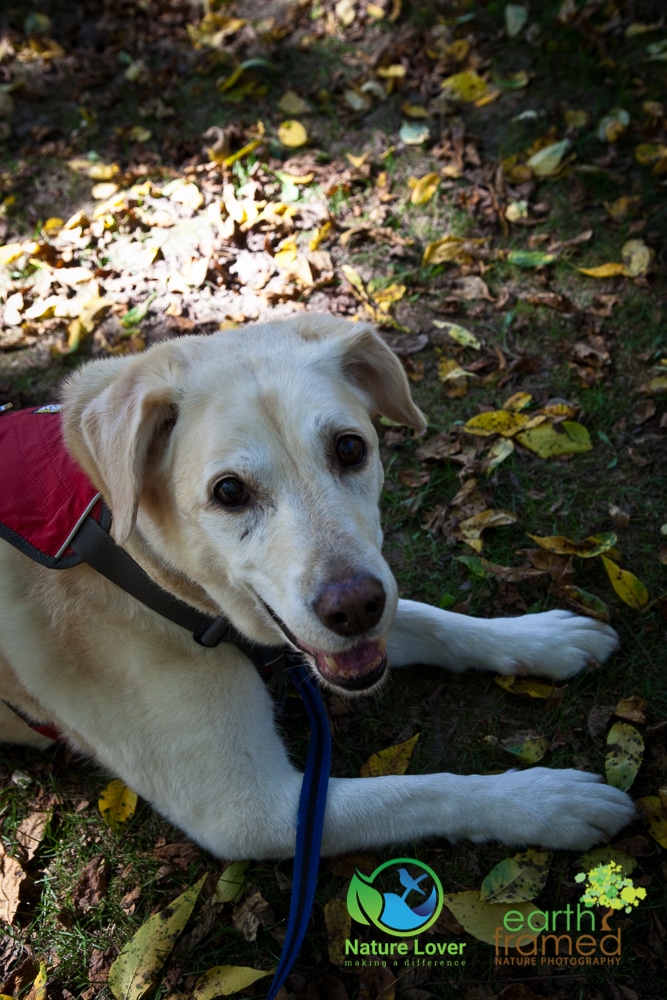
We relaxed in the shade and waited for the nature club members to arrive before Maya and her stuffed Kong hung out in the truck.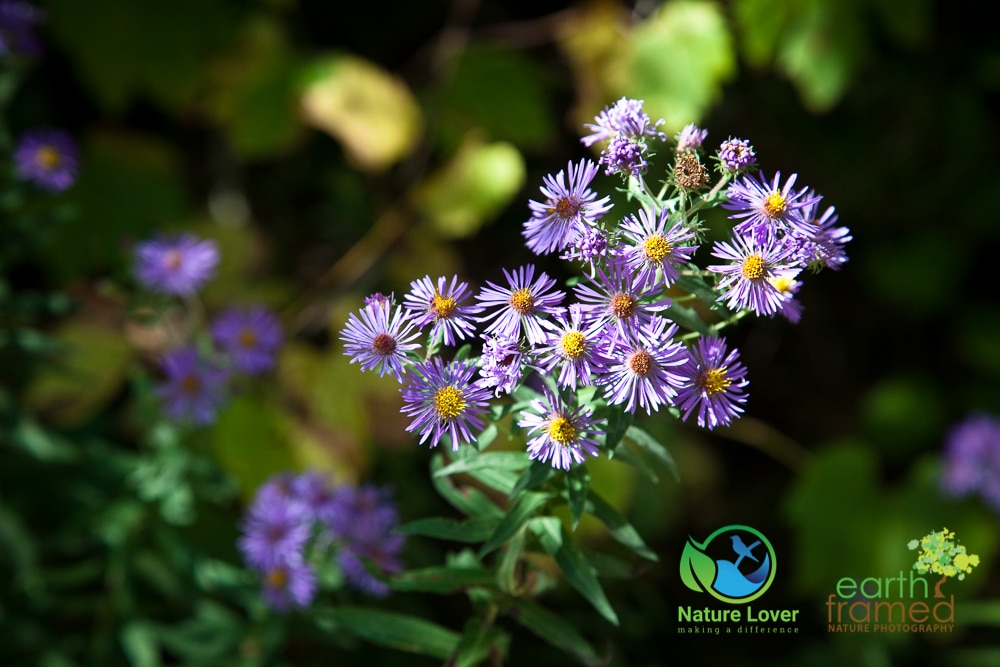
The hike leaders took us along the park’s road to the trail’s north entrance. Along the road we saw many fall flowers still in bloom. New England Aster has always been one of my favourites and we now have this plant in our own pollinator gardens.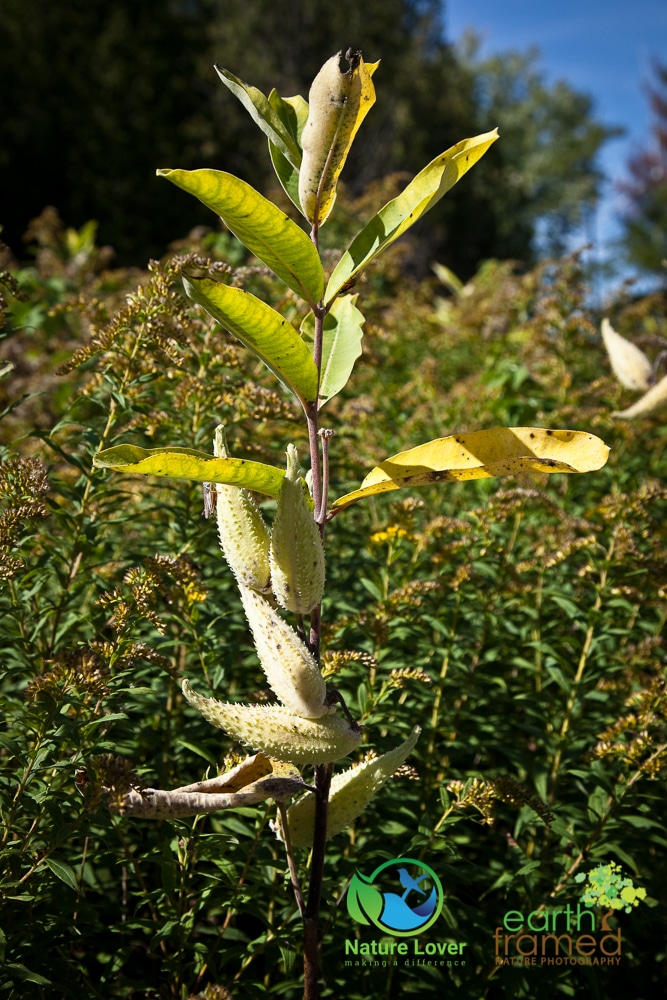
We spotted some milkweed that had green pods still. Further along we saw some covered in milkweed bugs. These bugs damage milkweed but they are part of the natural ecosystem. 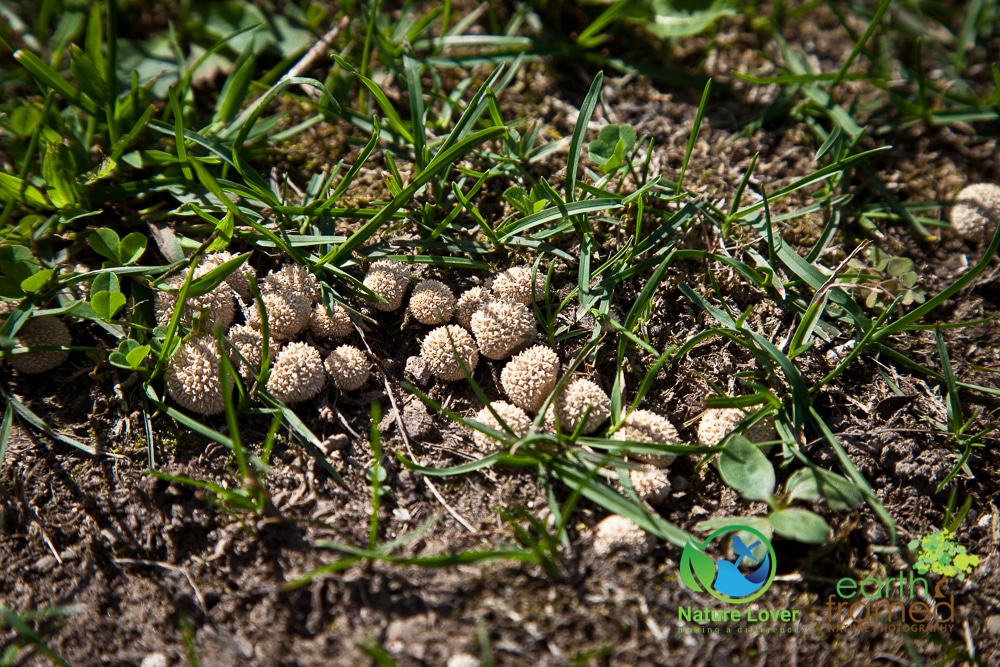
We found a cute little patch of spiny puffball mushrooms along the path. This type of mushroom can be found in North America, Europe, Central America and Africa. As this fungus ages, it will turn brown in colour.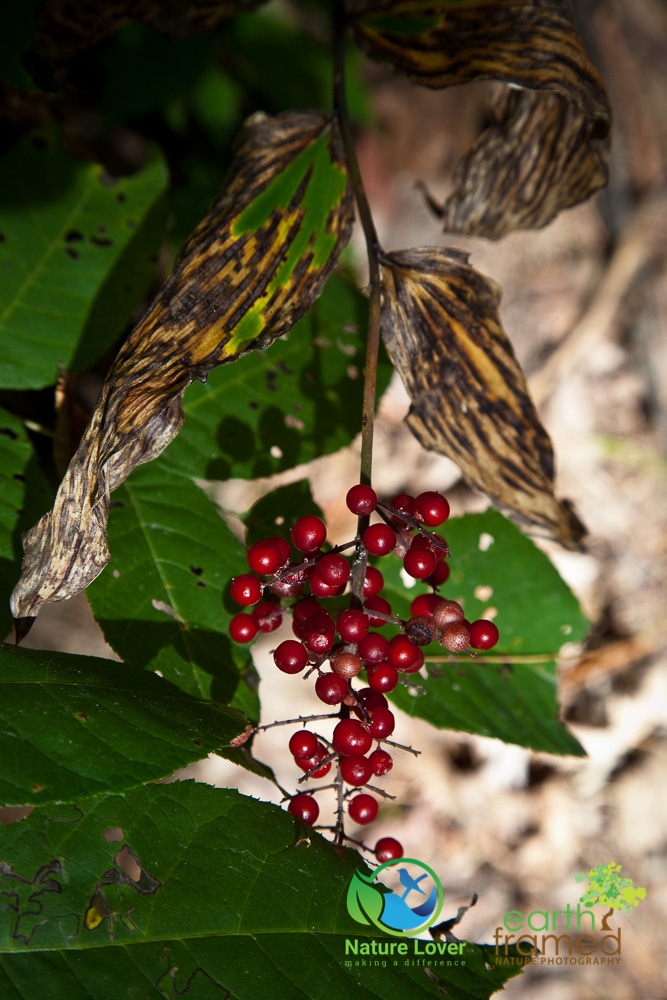
False Solomon’s Seal were sporting their bright red fruit bodies along the trail’s edge. The easiest way to identify a Solomon’s Seal as ‘false’ is by finding where the flowers and fruit grow. The various ‘real’ species will have flowers and fruit along the underneath of the stem, not just at the end of the stem.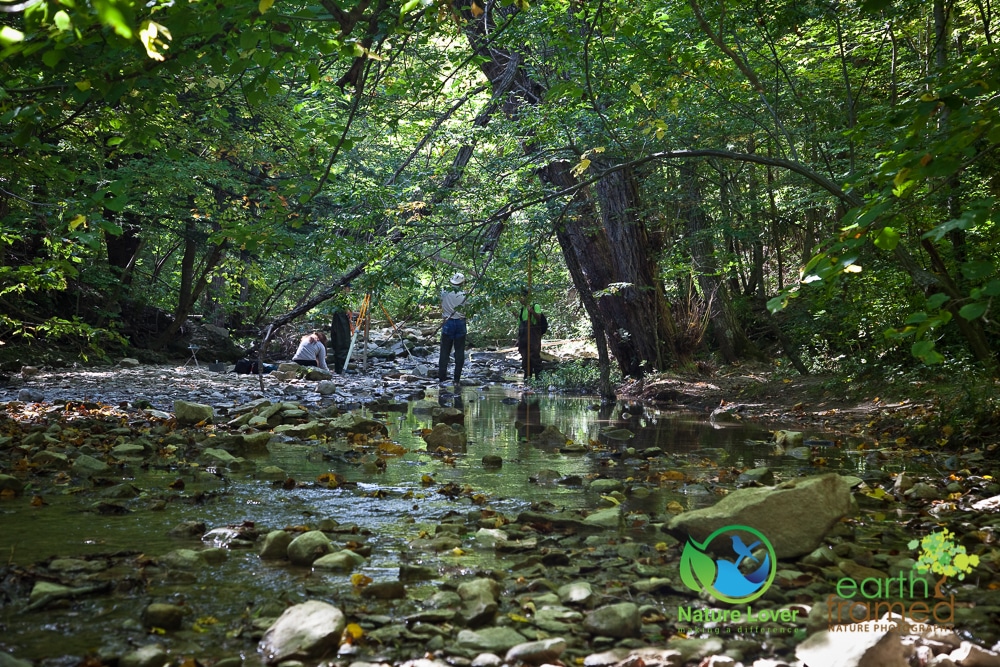
At the river we noticed a few researchers from Western University. Some of the members stopped to chat with them, but I didn’t catch what they were actually researching.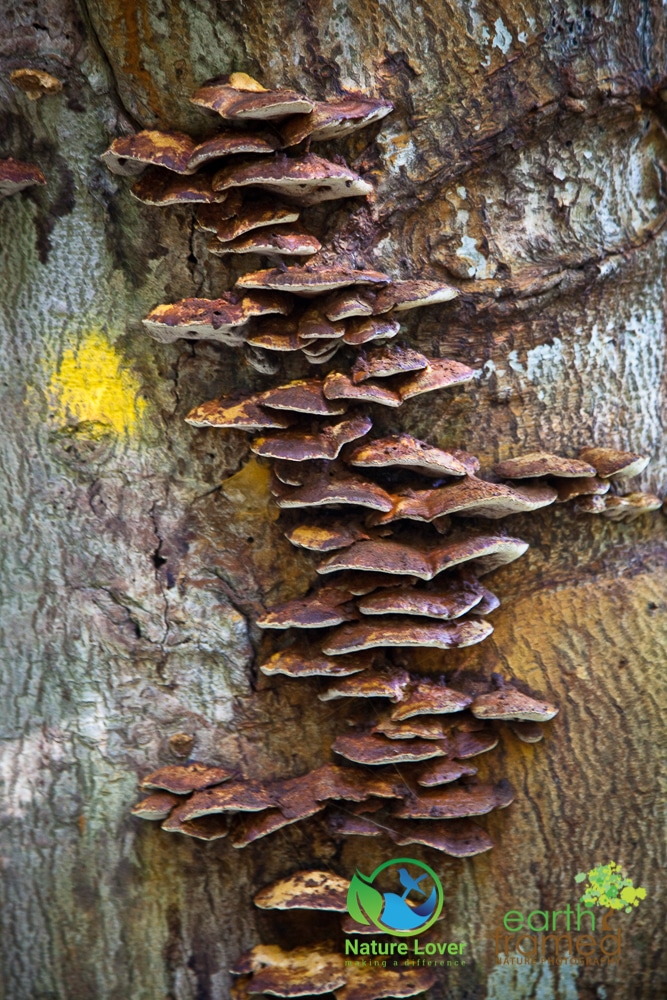
Throughout the year you will be able to spot bracket fungi in the forests and woods of Ontario. There are many different kinds that grow on both live and dead wood.
Stairs took us down to the bottom of the waterfall where we could see the clear evidence of erosion and the signs of much higher water levels during other times of the year. In my youth we could find fossils galore under the falls but most visible ones have either been taken by visitors or are now being preserved in the Arkona Lions Museum, which is located on the grounds. The museum houses fossils and artifacts from the Devonian era and contains specimens of crinoids, brachiopods and trilobites. Be sure to check for hours of operation before hoping to spend some time in the museum.


